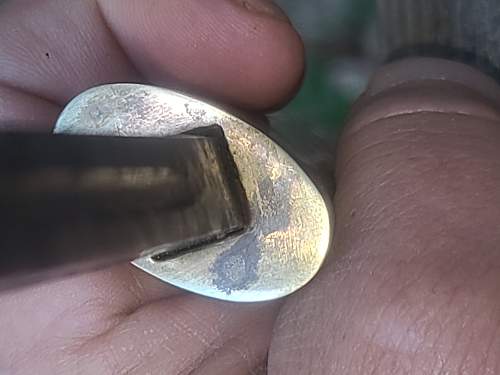Even the video is not usable the detailed picture of a blade where it goes into handle would help, the handle is brass and there are visible rivets of same material flashed with surface?? Unfortunally the pictures are not detailed enough. The end of handle doesnt look that the blade tang end was forged over washer on end of handle protruding out, so the tang should be inside riveted. Or pressed in some other way.





 .
.








Bookmarks